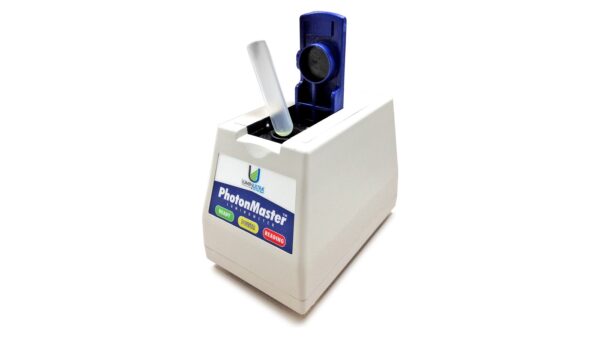For those familiar with 2nd Generation ATP testing, it’s clear that the luminometer is a critical piece of equipment in the testing procedure. It allows us to quantify ATP by measuring the light produced through the reaction of ATP and the luciferin-luciferase based enzyme – just like the way light is produced in a firefly’s tail. As described in “What’s a Luminometer? And Why Should You Care?”, LuminUltra’s PhotonMaster luminometer uses a sensitive photomultiplier tube to measure the low levels of light emitted from a processed sample. Because of their sensitivity, these detectors might also pick-up background luminescence during the analysis, which could be caused by damaged chamber seals, static electricity, an assay tube defect, or fluid build-up in the luminometer chamber. These background levels are low relative to the light output from samples with high ATP concentrations, but they can become significant in clean samples, where light output is low, or in protocols that require the use of our most sensitive enzyme, LuminaseXL. Fortunately, it is easy to take background luminescence readings and account for them in our measurements.
The best practice is to take a background reading with every sample, regardless of light output; it only takes a few seconds, doesn’t require any additional supplies, and helps to ensure ATP measurements are accurate. To take the background reading, add the Luminase enzyme to a new assay tube per the applicable LuminUltra test kit method (E.g. 100 μL for most test kits, 300 μL for our wastewater kits). Next, place the tube in the luminometer, and take a reading. If the reading is greater than 20 RLU, discard the assay tube and repeat this step. If the background level is less than 20 RLU, record this reading as RLUbg and then, using this same assay tube, complete the ATP test by following the applicable test instructions.
If you are using LuminUltra Cloud, the software will automatically incorporate the background value in the ATP calculation. If, however, you are processing data manually, subtract the background value from the sample measurement (RLUcATP, RLUtATP, or RLUdATP) before calculating the ATP concentration.
It is normal to get occasional background readings that are high, but frequent occurrences could indicate that the luminometer needs to be cleaned. If high backgrounds persist after cleaning the luminometer, try repeating the ATP tests in an area that is not exposed to direct sunlight or intense lighting.
By following these steps, you can improve the accuracy of your ATP data. Be sure to take a look at our latest ‘How-to’ video for taking background readings. If you have any questions or would like more information, our Technical Support team is always happy to help.









